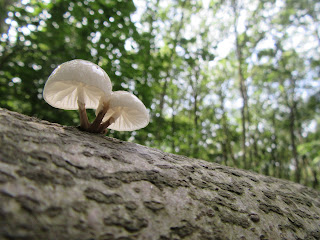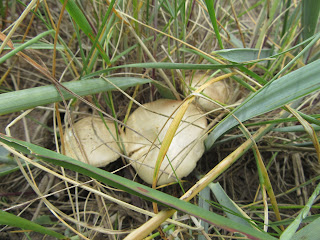Hair Ice
My closing post of 2019. What is Hair Ice? A fascinating process whereby a fungus called Exidiopsis effusa* grows on dead wood and if the conditions are ripe - which is humid air on winter nights whereby the temperature is below 0 degrees C. The action of the fungus enables ice to form thin hairs. The thin hairs melt when the temperature rises. The Ice Hair can form without the presence of Exidiopsis effusa but there would be the absence of the hair like structure and instead the texture would look more crusty.
This Hair Ice process was brought to my attention by a lady who sent me a lovely photograph of it which she came across when out walking. Please see the photograph below and huge thanks to J King for undertaking some research and sending me her photograph so that we can all wonder at this lovely natural process.
 |
| Showing close-up of the hair like structure |
 |
| Showing perspective and how it looks very hair-like on the ground too |
---------------------------------------------------------------------------------------------------
*Exidiopsis effusa is a species of fungus in the family Auriculariaceae, and the type species of the genus Exidiopsis. It is associated with the formation of hair ice on dead wood. Source Wikipedia.
http://www.bbc.co.uk/earth/story/20150727-mystical-hair-ice-riddle-solved




































